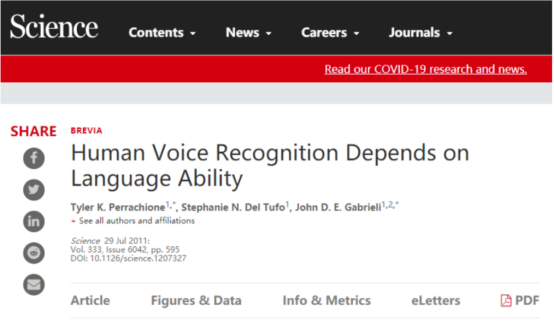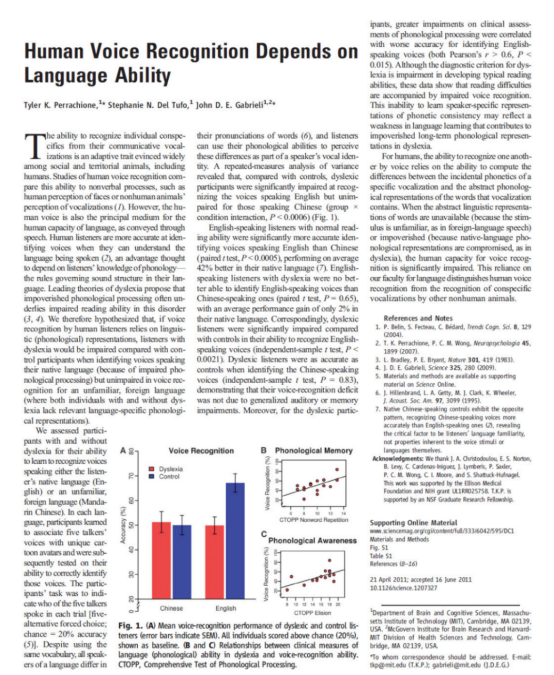Please click the button below to go to our email login page
|
Why can a paper under 700 words be published in Science?The article published in Science entitled “Human Voice Recognition Depends
on Language Ability (July, 29, 2011)” is written by 3 researchers from
Massachusetts Institute of Technology (MIT).
The article covers only one page with less than 700 English words, where only one behavioral experiment is performed, without advanced experimental facilities and complicated statistical approach. The result is just displayed in one figure.
Why can such a "simple" article be published in Science, a "top-ranked" journal? Several reasons may be included: 1. Raising a well scientific problem The article enrolls adults with or without dyslexia (control group) as subjects, and compares their ability to recognize voices speaking either the listeners’ native language (English) or an unfamiliar, foreign language (Chinese). If the authors raise questions only from the perspective of dyslexia, the article will be less original and innovative, and will not be published in the "top-ranked" academic journal. However, the authors propose a novel hypothesis, namely the impact of different language competences upon human voice recognition. The voice recognition is a cutting-edge scientific problem, which is the highlight of this article, since less discussion focuses on the relation between language competence and voice recognition. As Einstein said, “The mere formulation of a problem is far more often essential than its solution, which may be merely a matter of mathematical or experimental skill. To raise new questions, new possibilities, to regard old problems from a new angle, requires creative imagination and marks real advances in science.” Therefore, “to raise new questions” should be the core in a research from the beginning to the end, and research should be guided by questions. From experimental design to data processing and to writing, questions should be raised from various perspectives. Only by constantly updating the questions can the research continue to develop in depth. 2. Having an outstanding beginning It is well-known that the beginning of an article is hard to organize. The article identified that social animals have the ability to recognize individual conspecifics from their communicative vocalizations, and human listeners are more accurate at identifying voices when they can understand the language being spoken, an advantage depending on listeners’ knowledge of phonology. Then, two articles regarding dyslexia published in Nature and Science journals are cited to clarify the significance of researching voice recognition based on dyslexia. In recent years, “voice recognition” of human and nonhuman animals is a fascinating question when studying the relationship between “language and brain evolution”. For studying this question, the comparison between people with or without dyslexia provides a good starting point, which also may be the cardinal reason for the acceptance of this article by Science. 3. Selecting a special experimental task Different from other studies on dyslexia, the authors ingeniously adopt voice matching tasks. The innovation of experimental tasks or experimental paradigms requires researcher’s creative thinking. A new experimental paradigm often opens up a new field and reveals many unknown phenomena and regularities. Certainly, there are many other requirements to publish a good article, such as research accumulation and prestige of researchers in a certain field, writing experience and competence, and language expression ability. |


